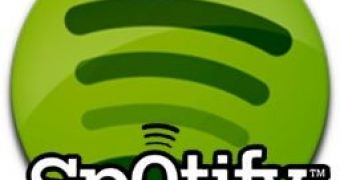Spotify made a series of announcements earlier today. It launched support for iPod syncing, free mobile apps as well as a music download store, there's certainly plenty to see. While the products alone are great for some Spotify users, they signal a much bigger change in strategy at the company.
Officially, Spotify is simply saying that it's offering a way for users to take their music with them on devices that don't have network connectivity, aka classic iPods, or if they don't want to move up to the paid subscription.
In theory, the fact that free users get access to mobile apps, albeit with limited functionality, should be a plus. But Spotify recently capped its free service quite severely.
For one, users can now only listen for 10 hours each month, half as much as they were able before. They are also limited to only five repeat plays of any single track.
This sends a very clear picture, if you want to use Spotify to actually listen to music, start paying. 10 hours a month is not going to be enough for most people but the worst part is the five plays limit. It means that if you really like a track, you won't be able to listen to it for long.
All of this means that the free service will increasingly be used as a discovery tool, a fast way of finding new music you may like. But once you find it, you're going to have to look elsewhere to actually listen to it.
Spotify hopes this means buying music from its newly launched download store. More likely though, users will turn back to their old, less than legitimate sources.
There are other clear signs that Spotify is positioning its free tier as a discovery tool. It's not a bad strategy either, a free service where you can check out millions of tracks, which can recommend artists based on your tastes and where you can buy the songs you like easily, is great.
But it's not what Spotify set out to do initially. At first, Spotify had a very clear objective, to offer a way for users to listen to music for free and curb piracy.
So why the sudden change of heart? Well, it's not really that sudden or that surprising, looking back. The major record labels, which actually have a stake in Spotify, never really liked the idea of free streaming.
Free streaming was just lost revenue, the way they saw it, and the fact that Spotify wasn't able to make much from the ads it ran with the free service only confirmed that.
Spotify still hasn't landed in the US, despite trying for more than a year and a half, also a clear sign that the labels don't want a free offering in the US.
So pressure from the labels could have persuaded Spotify to cripple its free service, in the hopes of being able to launch in the US and continue to get licensing in Europe.
But the explanation may be even simpler, Spotify needs to make money and the only viable way so far has been through its subscriptions. But it's been having problems converting users into customers, so the company may simply be looking to make its premium offerings more attractive.

 14 DAY TRIAL //
14 DAY TRIAL //